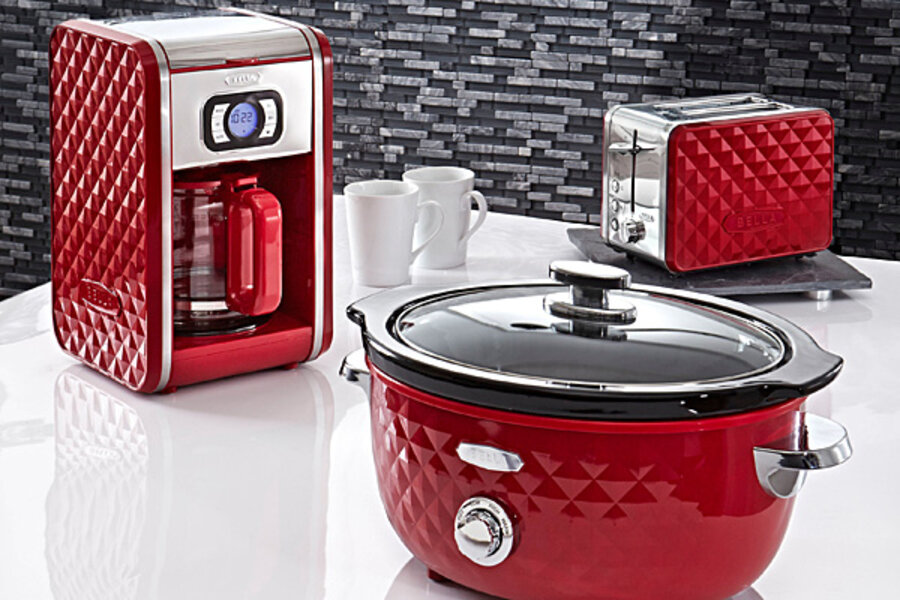Buy it for life. Save money.
Loading...
Over time, as our various pots and pans have worn out, we’ve slowly been replacing them with enameled cast iron, which are fairly expensive – substantially more than the pots and pans at our local department store.
My pocketknife’s blade became so beat up that it could barely cut string. I now use a Leatherman, which cost more than many other options.
After watching three different umbrellas completely fail under normal use, we purchased a Davek, which cost us about five times as much as the umbrellas we had previously purchased.
Why are we slowly making these purchases to replace worn-out items? We believe in a “buying it for life” philosophy when it comes to buying things.
In other words, when I buy something, I’d rather pay more now to not have to deal with replacing it for a very, very long time. Ideally, I’d like to not have to replace it in my lifetime – and I’m in my mid-thirties.
Why should I ever buy another pot or pan? Why should I ever buy another pocketknife? Why should I ever buy another umbrella? I could go on and on with lists of these things.
Here are some principles we try to stick with when it comes to buying it for life.
First, we tend to strongly favor companies that put extensive warranties or guarantees on their products. For example, Le Creuset – our preferred manufacturer for enameled cast iron pots – has a 101 year guarantee on all of their products. The Le Creuset we bought a few years ago will still be guaranteed when our grandchildren are old.
Note that not all guarantees are made the same. Many guarantees and warranties are for the “lifetime of the product,” which really doesn’t mean much at all. I tend to look for warranties that are stated in years – preferably a lot of years.
Second, we tend to strongly prefer products that are low maintenance or have maintenance we can do ourselves. If I buy a vacuum cleaner, I want to be able to easily dismantle it and replace a belt or clear out clogs. This requires some research into the product, of course. I don’t trust any product that has a “black box” of some kind that requires a repairman to fix unless it’s truly an electronic item.
Third, since we’re spending more on item purchases, we tend to spend more time researching them. If you’re heading to the store to buy the cheapest vacuum, you don’t need to worry that much about research. If you’re trying to buy a vacuum that will last five times as long and are willing to spend five times as much, then spending significantly more time researching the purchase is cost-effective.
We usually start with Consumer Reports and branch out by using a few trusted websites and the thoughts of a few of our friends who have similar philosophies.
Fourth, if we can’t buy the “buy it for life” version of an item due to cost, we buy a very low-end version. We usually look for the Consumer Reports “bang for the buck” item and buy that one instead, knowing that it will likely fail in five to ten years. Until then, we will get good use out of that item.
Finally, free trumps buying it for life, but cheap does not. If someone gives us an item, we’re likely to just use that until it fails. Part of the reason for that is that there’s no research involved and no time invested searching for and buying the “right” item. We’re just handed an item that does the job for now.
However, if we’re actually spending money on an item, we’d rather spend more and buy the right item.
Buying for life rewards us in several ways, but the biggest one is that our buying cycles are longer, so we’re not replacing items very often once most of the items in our home are “lifetime” purchases. This means that once we’ve mostly moved to items that are very long-lasting, our monthly expenses are substantially lower. We don’t have many items failing on us, so we don’t have many items that need to be replaced.
In other words, we view “buying it for life” as an investment of sorts. It’s a purchase that reduces our expenses over the long haul, particularly down the road when our income isn’t as certain as it is right now.
Not only that, we rarely have to deal with the immediate headache of a needed item failing at an inopportune moment. The things we buy tend to just work, period.
Not only that, but items bought with a focus on using them for life tend to be very usable. They’re made to do their task in a very straightforward way and they’re made to do it well. It’s often hard to misuse and abuse these kinds of items, and they just do their job.
I recommend using the “buy it for life” perspective on as many of your purchases as you can.






